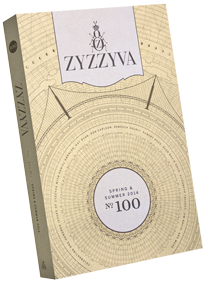 I always wear my crappiest clothes to fly. It’s been my habit for a long time, so long I don’t remember, dating back two decades, quarter of a century. My uniform: well-worn cargoes, brown or khaki, fabric so thin it feels like a bed sheet, soft, threadbare. Old promotional T-shirts, advertising books too ancient, even, to be remaindered; my current favorite highlights an early 1990s exegesis of the Greenwich Village Halloween Parade. Button-downs frayed at cuffs and collar, not unlike the ones I wore in high school, although the point then was a certain shabby chic. Such affectations, it should go without saying, no longer compel me, not when I fly or any other time. And yet, perhaps, I am looking for a through line, a link to my younger self, a consistency by which to neutralize my fear.
I always wear my crappiest clothes to fly. It’s been my habit for a long time, so long I don’t remember, dating back two decades, quarter of a century. My uniform: well-worn cargoes, brown or khaki, fabric so thin it feels like a bed sheet, soft, threadbare. Old promotional T-shirts, advertising books too ancient, even, to be remaindered; my current favorite highlights an early 1990s exegesis of the Greenwich Village Halloween Parade. Button-downs frayed at cuffs and collar, not unlike the ones I wore in high school, although the point then was a certain shabby chic. Such affectations, it should go without saying, no longer compel me, not when I fly or any other time. And yet, perhaps, I am looking for a through line, a link to my younger self, a consistency by which to neutralize my fear.
Fear? I’d be lying if I said it’s not a factor, although this is equally about comfort, since these are the clothes I wear around the house. I am happiest in loose clothes, old, baggy, shapeless, clothes in which I can forget myself. This is a key conflict with flying, as on a plane I never lose touch with my physical existence, my desperation to remain alive. Does that sound overstated? Desperation is a strong emotion, and mostly when I’m in the air, I’m lost in a book, avoiding conversation with my seatmate, trying to crawl outside time a little, to get it over with. Still, I hate to fly—or no, don’t hate it any longer, although I’ll never like it, never feel comfortable strapped into a narrow chair in a long tube full of strangers, shot across the sky like a bullet, all of us aware that we may die. “People are polite on airplanes,” observes Don DeLillo in his play The Day Room. “There’s a whole thrilling layer of politeness, especially in the last few seconds before takeoff, on a transoceanic flight, at sunset, with a crew of sixteen, twenty-four. … Going down the runway, everyone belted in, assigned letters and numbers. The landscape hurtling past, the temperature regulated …We sense the presence of death.”
Here we have the reason flying stirs us, as if we were in a church or synagogue, or any other place where we sit in rows and confront the bitter half-life of our evanescence, pray that we don’t disappear. It’s why air travel used to come attended with such solemnity, why we used to treat it as an occasion of a kind. The first flight I remember—late summer 1967, New York to Los Angeles on an American Airlines 707, movie (Twiggy in The Boy Friend, I want to tell you, although it didn’t come out until four years later) unspooling in sixteen millimeter jags and stutters as the plane traversed the clouds—I wore a tie and blue Brooks Brothers blazer; my mother dressed in pearls and heels. I was six, but even at this age, flying left me edgy: excited, certainly, imagining that we were in a rocket, marveling that the sky could be so static, as if we weren’t moving through it, yet at the same time more than a little unmoored. It was as if some fundamental connection had been severed, and now that we had managed to get up, there was no clear passage for us to come down. The ten-minute rule, I’d later come to understand, since the real danger of flying occurs in the first ten minutes and the last ten minutes, ascent and descent, as we leave the planet and again as we return. There’s a message in all this somewhere, a signifier of release and control. “Be at ‘Full Alert’ During the Critical Periods,” a website called How to Survive a Plane Crash admonishes, but what interests me more is how I might move away from such alertness, how I might, in other words, be reassured.
At six, I already had a full-blown fear of death. My earliest encounter: four years old, in the living room of our small Central Park West apartment, telling my father I envied G.I. Joe because he didn’t have to die. My father was twenty-nine, and not particularly equipped for such a conversation; a decade later, in a different apartment on the other side of the park, he would tell me we were born to be part of the food chain when I asked him, in a fit of adolescent existential torment, what was the purpose of life. On Central Park West, he managed to be softer, either because I was younger or because he himself was not completely formed. Yes, he told me, but then you wouldn’t know the joy of living—a platitude, to be sure, but not untrue, and especially striking given that the joy of living has never been a pleasure he’s embraced. It was two years after that, in our Galaxie 500, driving through an alley in Long Beach, California (where my father had a one-year fellowship; hence, the cross-country flights to visit grandparents, to spend the holidays, to maintain close contact with Manhattan, the glimmering endpoint of my parents’ American Dream), when I had my first experience of (let’s call it) death dread, that pit-of-the stomach panic, like a case of vertigo, when you realize there is no way out. The moment remains as articulated as a film clip, the four of us en route to my father’s cousin’s in the Valley, me leaning over from the back seat, my brother in the corner next to me, playing with a plastic dinosaur, olive green. Even if you could get out of dying, I remember saying, you wouldn’t want to live forever … and then the bottom dropped out of my guts and I was uprooted, without gravity, as if I were in a plane falling from the sky. It wasn’t that one option was impossible and the other inevitable, it was that both were unacceptable, unimaginable, each the inverse of itself. As Philip Roth laments: “The ceaseless perishing. … What an idea! What maniac conceived it?” He’s right, of course, but the real horror is that, even if there were an alternative, it would be just as bad.
Order a copy of Issue No. 100 here.


Thanks for a realistic piece of writing. I feel more comfortable with having no alternative.
My first flight was on a PanAm plane between the Azores Islands and Lisbon, soon after WWII ended. My fear goes back a long way. I sit with my eyes closed and think of my father in a military uniform. He holds my hand all the way to my destination. Yes, no alternative is a better option.